History uncovered: UW research finds thousands of past racial restrictions in Kitsap
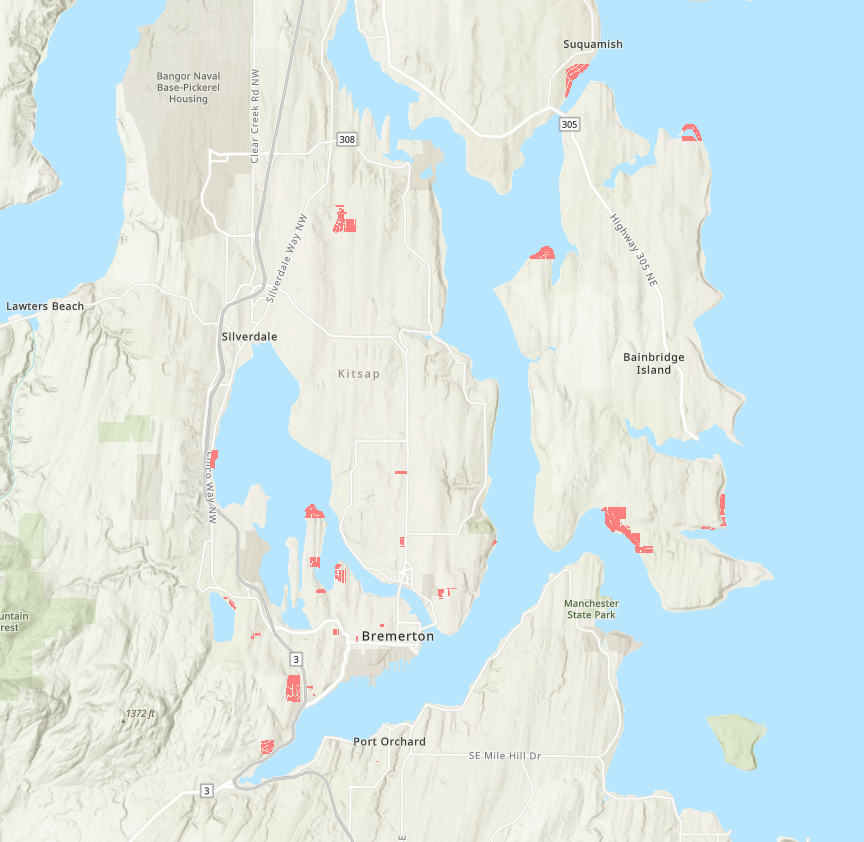
It's not a secret that Kitsap County possesses a history of segregation, where some areas of the peninsula were only allowed to sell or rent to white people in the early and mid-20th century. But a specific geographic distribution of the over 2,300 properties that carry racial restriction covenants has not been catalogued for the public — until now.
For several months between the fall of 2022 and the spring of 2023, two or three researchers at the University of Washington headed to the Puget Sound Regional Archives in Bellevue and spent each Friday digging into Kitsap County deed books — specifically, around 300 bound volumes and 520 documents between 1921 and 1948.
The purpose was to identify and map neighborhoods marked by racist deed provisions and restrictive covenants across the state before 1968. A team at UW researched properties in Western Washington and researchers at Eastern Washington University looked into properties on the other side of the Cascades. So far, the project has identified documents covering about 50,000 properties statewide that contain racial restrictions. In Kitsap, the research, primarily conducted by project coordinator Sophia Dowling and research associates Erin Miller and Samantha Cutts, identified over 2,300 properties in the county.
Among the over 2,300 properties, most are in Bremerton (1,054 properties), followed by Bainbridge Island (598), an area of Central Kitsap east side of Island Lake (235), Suquamish (197), Port Orchard (62), Kingston (26) and Seabeck (1), according to the research team's project website.
The team published an interactive map that marked its preliminary findings — the location of the properties, the language of restriction, the name of the developer, and the initial date of restriction — on UW's project website last summer.
“This is a very concrete way of seeing how our cities were shaped by segregation,” Dowling told Kitsap Sun. “We have the documents here and we have all the actual concrete data that people can look at this, and different research groups can use this data to come up with solutions and you know, ways to reconcile this history of segregation.”
The project results have contributed to the passing of a state house bill last year, which will provide financial assistance for people who were harmed by racial restrictions to purchase their homes.
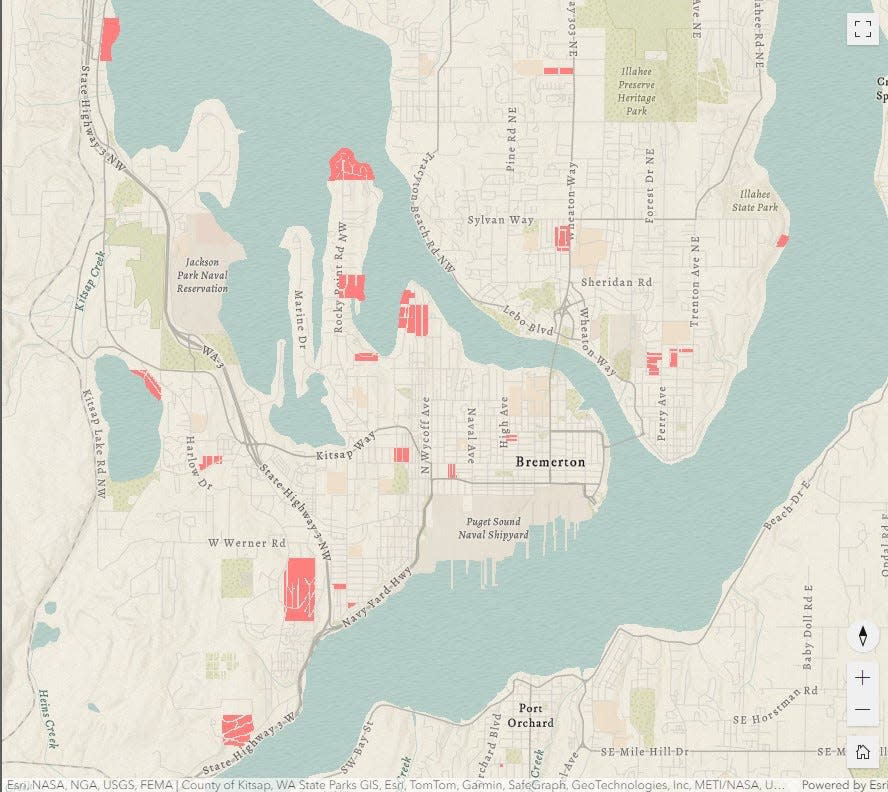
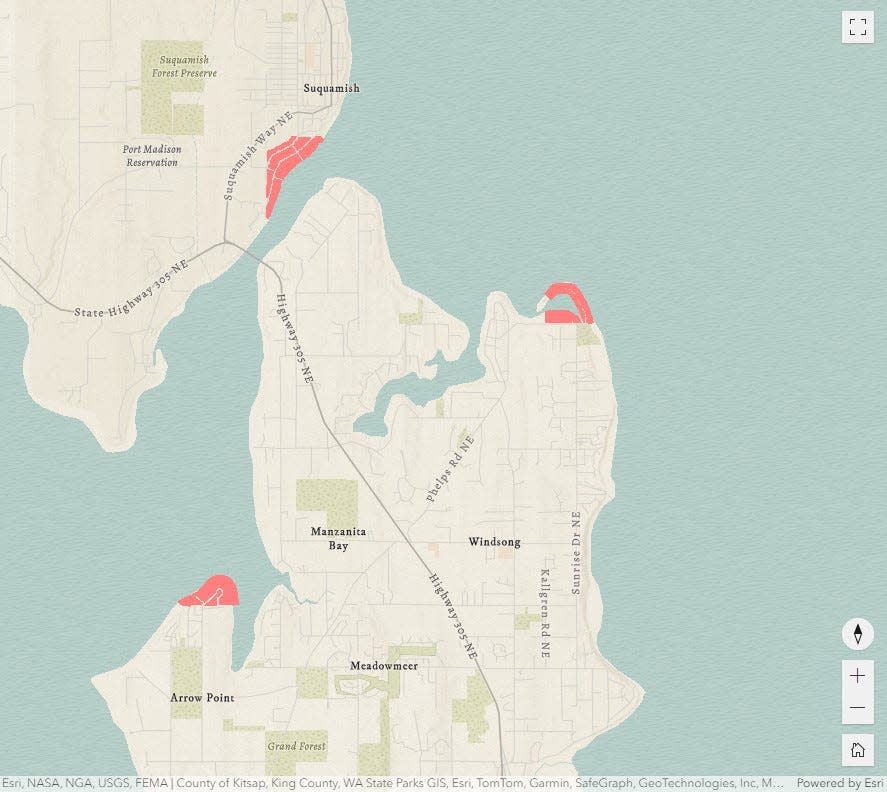
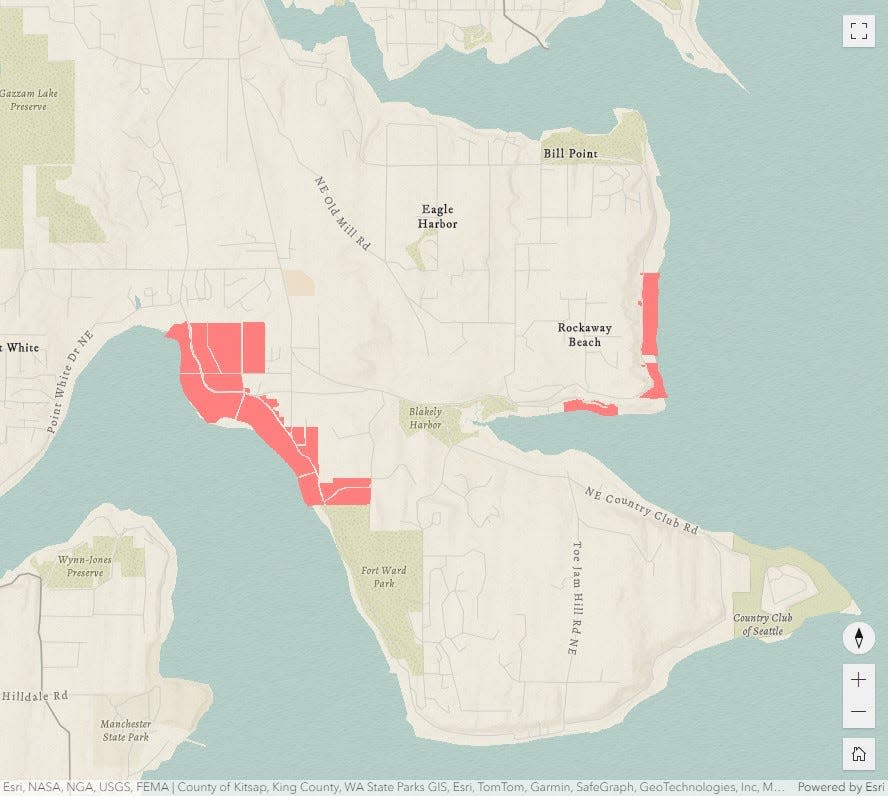
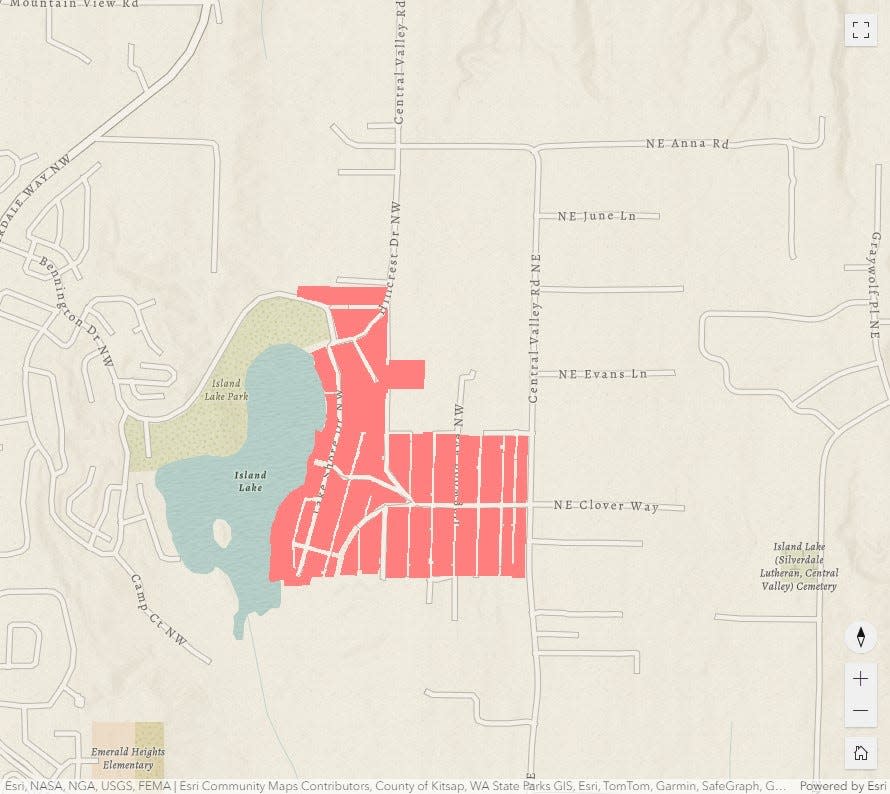
"Do not assume that areas without marks were not restricted," the project team wrote on the project website. "Deed restrictions were only one of the mechanisms of segregation. Neighborhoods without covenants often practiced racial exclusion by other means,"
The language of racial restrictions on property records
Some property records, like the deeds of properties located at the east side of Island Lake in the 1930s, include words that said: "No part of the premises shall be used for any purpose contrary to the law, nor be occupied by any person not of the Caucasian or white race."
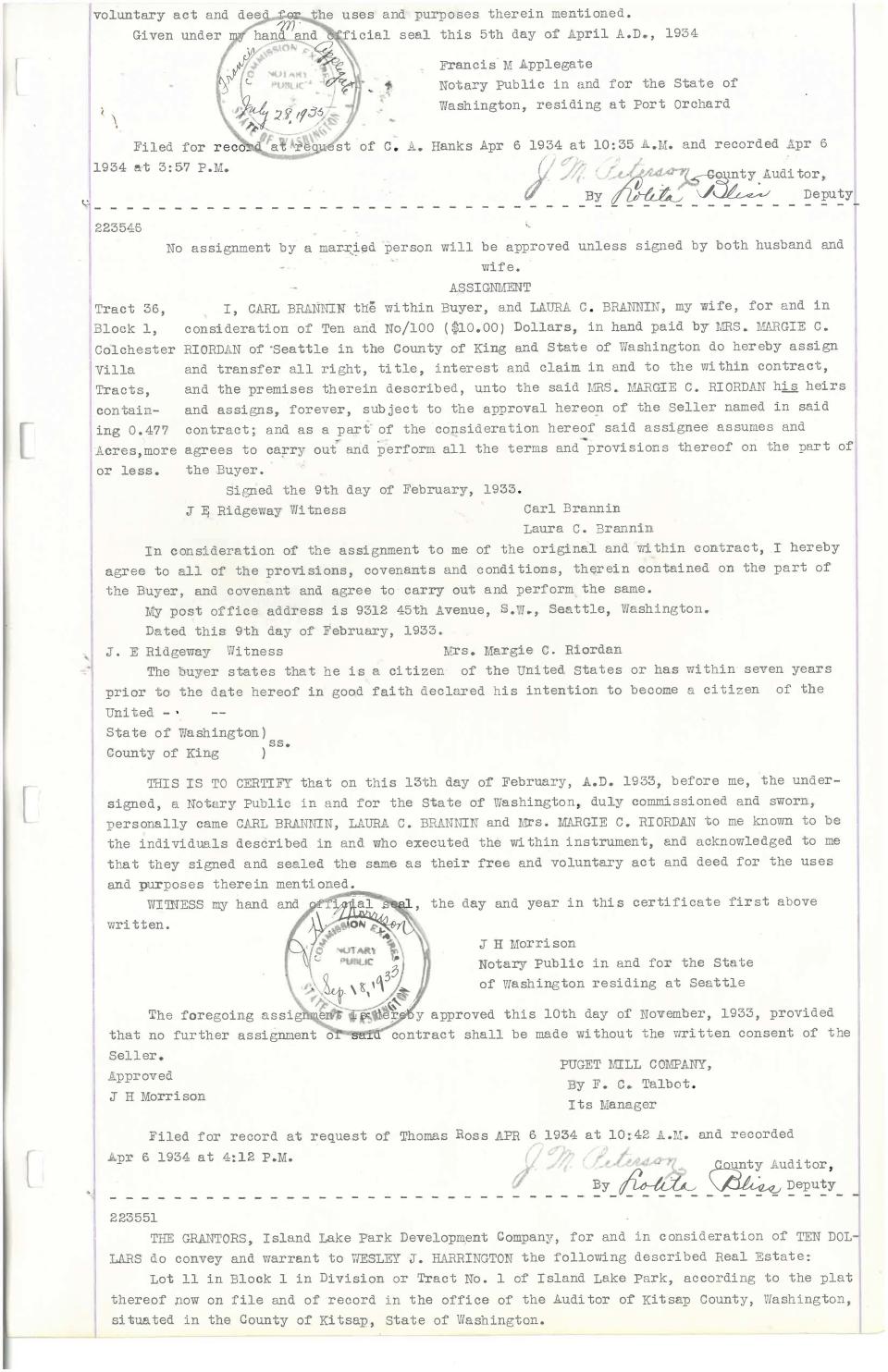
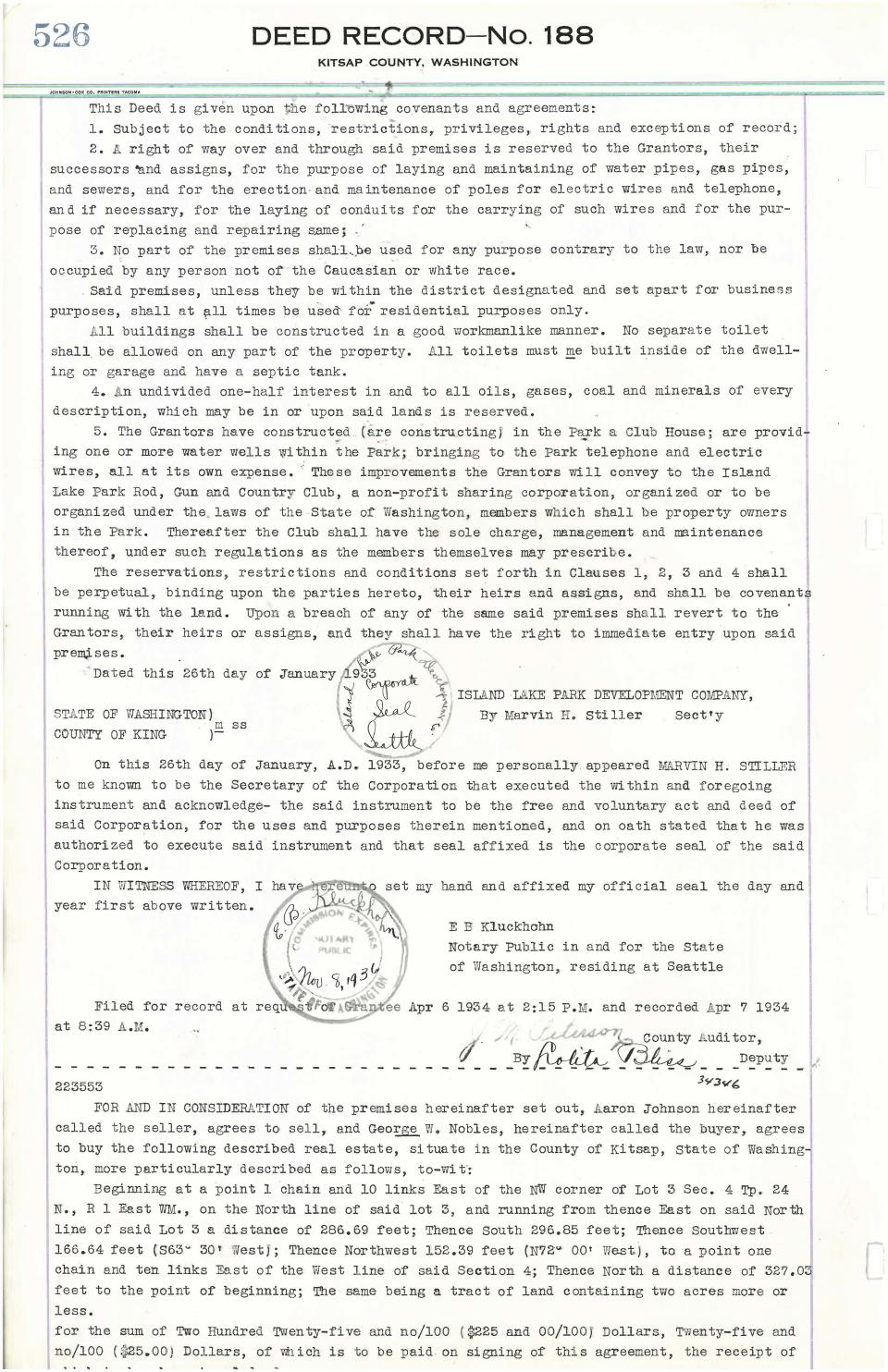
Some properties along Bremerton's Rocky Point in 1927 carried restrictions: “Said premises shall not at any time be leased, sold, conveyed, or occupied by any person other than one of the Caucasian or white race,” according to the research team.
Some parcels located along the shore on Rockaway Beach Road NE and NE Seaborn Road on Bainbridge Island had records in 1936 and 1937 that include the sentence: "No portion of the above property shall be sold, conveyed, leased to, or occupied by, a person or persons other than of the Caucasian race, except that a domestic servant of persons then residing upon the said property shall be allowed thereon in connection with his employment."
One property near the southwest corner of Givens Park in South Kitsap had restrictions on its deed in 1944 that banned Black people from buying or renting the property: "This property is sold on the strict reservation that it shall never be sold or rented to anyone of negro ancestry."
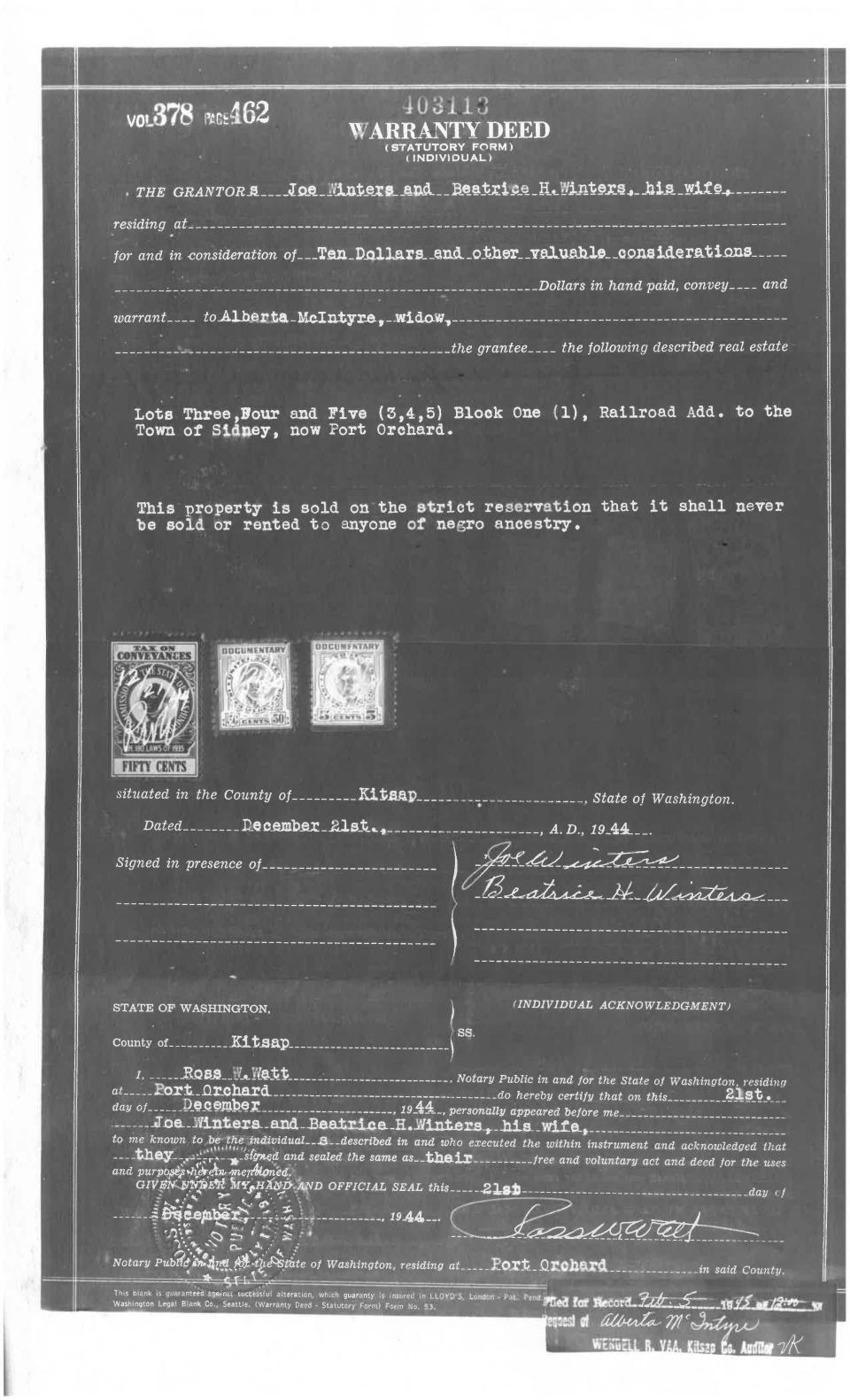
Some parcels in Suquamish have records in 1946 that said “Ownership and occupancy of property in this plat shall be restricted to person or persons of the Caucasian race.”
The geographic distribution of these properties corresponds heavily to population growth, Dowling said.
"Usually, restrictions tend to follow patterns of population growth and development, so it's most common in urban areas, and like communities that are growing at that time," Dowling said.
More research results to come
The UW team is now working on finishing the research in other counties before the team can dive into deeper stories beyond their preliminary findings, Dowling said.
"We are mostly done, I would say, with the research process in Kitsap," Dowling said. "We finished up the maps this summer, but there are still some mapping problems and little quirks we're trying to work out."
"Eventually, there will be hopefully some written material on Kitsap, but we're really working on finishing all of the county research right now, going through the property records before we can move on to diving into some of those stories. So, there will be more on Kitsap," Dowling said.
Besides Kitsap, the research team has identified over 34,000 properties in Seattle and King County, more than 4,500 properties in Tacoma and Pierce County, and over 4,200 properties in Everett and Snohomish County.
The regions in Western Washington that have fewer properties carrying racial restrictions than Kitsap County are Olympia and Thurston County (over 1,600 properties), Bellingham and Whatcom County (over 1,600 properties), Whidbey and Camano Islands (nearly 1,000 properties), Skagit County (570 properties) and San Juan County (101 properties), according to the project website.
Related history: A Tahuya slough, once named for the N-word, was farmed by Black pioneer born into slavery
Research helps pass bill that assists victims of property exclusion to buy house
The research project was authorized by the state's Legislature under House Bill 1335 in 2021. Its preliminary results have shown an impact at the state level.
The Washington legislature in April passed HB 1474, the Covenants Homeownership Account Act. The act will establish a homeownership account that provides downpayment assistance and closing costs loans to first-time homebuyers with incomes at or below the area median who were victims or the descendants of victims of property exclusion in Washington State, Dowling said.
"We were part of the passing of this bill and they looked at our research while coming up with everything. So, I think seeing these very concrete ways that our research is influencing other groups is really important to us," Dowling said.
“We are hoping that this research, and we already know that it has, will stem a lot of other research,” Dowling said.
The interactive map of Kitsap County and more research results of the project can be found at https://depts.washington.edu/covenants/map_cov_kitsap.shtml.
This article originally appeared on Kitsap Sun: Washington state researching racist property covenants from past
